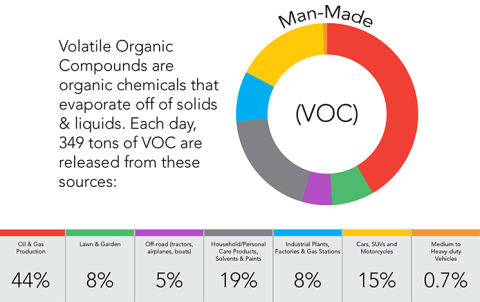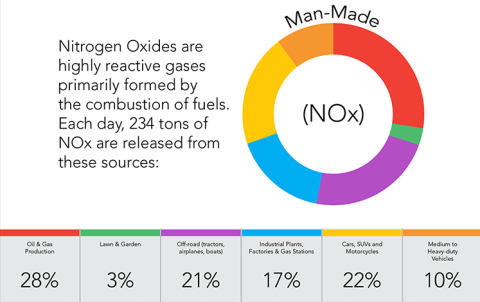Air Quality
The Connection between Air quality and Climate Change
The EPA states clean air is critical to human health. It is also important for the health of vegetation and crops. It contributes to people’s enjoyment of scenic areas, like national parks and wilderness areas. Climate change can affect air quality, and certain air pollutants can affect climate change. For example, hot sunny days associated with a warming climate can increase ground-level ozone in some areas. Ground-level ozone is also a greenhouse gas that contributes to climate change by trapping heat in the atmosphere.
What is our Air Quality like today?
 The AQI scale is described by six air quality categories. According to the index, any reading between 0- 50 indicates good air quality, 51-100 moderate air quality, 101-150 unhealthy for sensitive groups, 151- 200 unhealthy air quality, 201-300 very unhealthy air quality, and 301 and above hazardous air quality.
The AQI scale is described by six air quality categories. According to the index, any reading between 0- 50 indicates good air quality, 51-100 moderate air quality, 101-150 unhealthy for sensitive groups, 151- 200 unhealthy air quality, 201-300 very unhealthy air quality, and 301 and above hazardous air quality.

What is Ozone?
Ground level ozone or "bad" ozone is not emitted directly into the air but is created by a reaction that occurs between two different pollutants. These are oxides of nitrogen, or “NOx”, and volatile organic compounds, or “VOCs”, in the presence of sunlight. The Denver Metro-North Front Range does not meet the Environmental Protection Agency’s (EPA’s) standards for ozone.
What is the problem?
Unlike the good, protective ozone layer in the stratosphere, ground-level ozone is a harmful air pollutant that affects all of us (Regional Air Quality Council). It’s formed when emissions from everyday items combine with other pollutants and “cook” in the heat and sunlight. Sources of such emissions include local industry, gasoline-powered vehicles and lawn equipment, and household paints, stains and solvents. Weather plays a key role in ozone formation. The highest ozone levels are usually recorded in summer months when temperatures approach the high 80s and 90s.
Pollutant Status:
In 2022, Colorado's Front Range encompassing nine counties, was reclassified as "severe" and out of compliance with federal air quality standards of ozone. An EPA downgrade from serious to severe violator will require implementation of several new measures aimed at reducing air pollution:
- Gas stations in the Northern Front Range will be required to sell cleaner-burning gasoline. Many expect this change to be enacted in summer 2024.
- The threshold for when a business must get a permit and control their emissions will be lowered, resulting in stricter controls.
- Requirements for those with existing permits become more stringent.
- Additional resources for staff, monitoring equipment, and pollution reduction programs will become available as a result of the downgrade.
Why are ozone levels so high in our region?
- Emissions from human, industrial and natural sources;
- Our region’s meteorology and geography create a situation where air pollutants don’t easily disperse and can instead build up around the foothills and mountainous areas; and
- Background ozone from other states and countries.


For more information, look at our Environmental Health Air Quality page.
What Can You Do?
Start with fewer car trips—Skip the Trip!
- Pack a lunch or walk to lunch
- Walk, jog, or ride a bike to the gym
- Use Public Transit to get to a game, concert, or other event
Combine Car trips
- Adopt the “while I’m out” approach
- Pick one day to run errands, and put an errand box in your car with reminders so you don’t forget
- Try to keep trips to 30 minutes or less
Energize Your Ride
- Consider electric vehicles or E-biking
Challenge yourself to add other efforts
- Don’t let your car idle for more than 30 seconds
- Fill your gas tank in the evening when it’s cool
- Keep lawn equipment well maintained or switch to electric tools
- Mow after 5 pm on hot, sunny, summer days
- Stop refueling at the click
- Keep your car well-tuned


